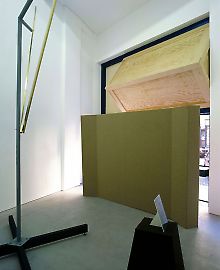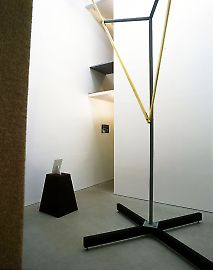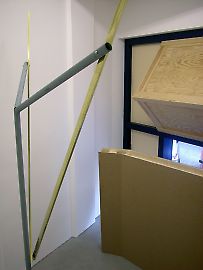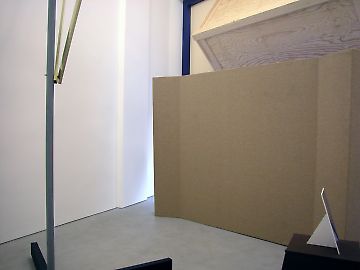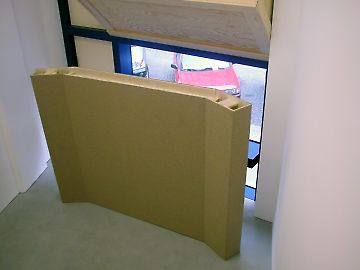Koenraad Dedobbeleer -- Bad Timing
For the first exhibition in the recently opened GEORG KARGL BOX, 30-year-old Belgian artist Koenraad Dedobbeleer transforms the new gallery into a spatial installation. In his construction he subjects the internal space to sensitive changes, interfering with the viewers’ habitual perceptive patterns by means of deliberate and precisely executed architectural interventions and additions. Its tension is generated by actively involving the viewers, by disrupting unambiguous allocations and the security associated with reality and deception. This makes the viewers recapture and relive their way of interacting with Dedobbeleer’s objects in the specific context of the surrounding space.
Koenraad Dedobbeleer’s installation, whose title alludes to Jim O'Rourke’s eponymous album and Nocolas Roeg’s film “Bad Timing” of 1980, is a complex reference to art and cultural history. His considerations depart from a photograph made by American conceptual artist Louise Lawler; in it, she documents and analyzes the environment and presentation mode of a kinetic object by George Rickey in one of Sotheby’s sales rooms, devoting her attention to the social, aesthetic, and economic aspects of institutional conditions. Similarly to Lawler’s strategy of appropriating extrinsic artistic positions, Dedobbeleer detaches the display wall, pedestal, and Rickey’s sculpture from their photographic model, as it were, to translate it back into the reality of the gallery’s economic and institutional framework. Through this “transformation of transformation” his installation addresses questions pertaining to the autonomy of the artwork in a social, economic, and thematic context.
The carpet-covered wall confronts visitors like an obstacle that impedes direct access to the 40 squaremeters-gallery, deliberately guiding them along predetermined tracks. That is how it also defines a “private” space for the 4-m reproduction of Rickey’s sculpture and a photograph put on a pedestal. By walking through the installation, visitors penetrate an intimate setting and are made acutely aware of the complex interactions between object, subject, and presentation. Seemingly everyday objects, used conventionally in exhibition environments, are freed from their regular usage and are reassessed by their new contextualization. Dedobbeleer’s objects oscillate between sculpture and basic commodity; on the one hand, they stand for themselves, and on the other hand, they identify themselves, for the duration of their individual constellation and in their own functionality, as a “non-functional” artwork and a seemingly functional everyday object. They occupy and mark the newly created space, and make it perceivable as a permanently changing sphere for activities which also contradicts existing referential systems and customary perceptive patterns.
In the architecturally and functionally defined framework provided by the GEORG KARGL BOX, Dedobbeleer’s objects appear intentionally undefined, thwarting any attempt at locating them with great precision in a temporal referential system. During the exhibition they are like the forgotten remnants of a gallery that has just gone out of business, rather than one that has just opened. However, there is no evidence of their use. Their timeless no-frills formal idiom makes them appear deceptively solid. But these expectations are not met as their quality of workmanship is deliberately poor, which puts them in contrast to Richard Artschwager’s portal, crafted to perfection.
Dedobbeleer’s installation Bad Timing, put on display in the GEORG KARGL BOX, is expanded by two “hidden sculptures” featured in the parallel exhibition Good Timing. Connections are not articulated primarily by an open physical presence; rather, the two shows encourage viewers to set intellectual points of reference in the physical course they are following. (text: Fiona Liewehr)


